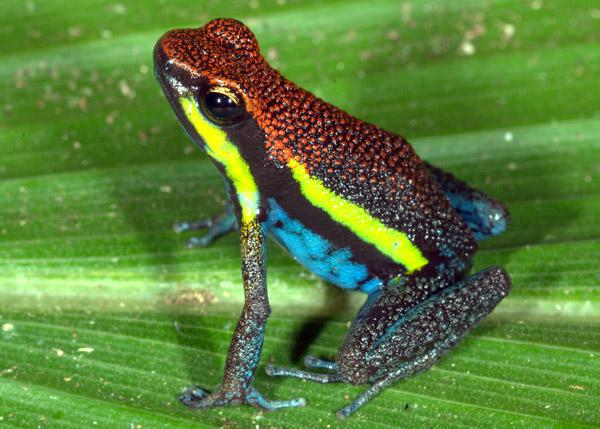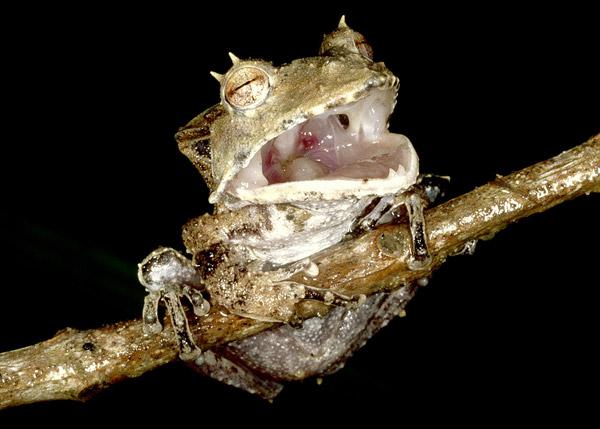Alessandro Catenazzi
Other projects
The project goals are to document diversity and assess condition and trends in a species-rich, montane frog community, to study the population response of selected species to land-use changes, to increase our knowledge of the natural history of endangered and critically endangered species, to raise awareness of the current threats on frog populations, and to involve local people and children in research, monitoring and education activities.

Ameerega macero poison dart frog in Manu N.P. © Alessandro Catenazzi.
Amphibians are declining at alarming rates throughout the world. Montane neotropical anuran communities are among the most vulnerable to these declines and extinctions. Negative population trends are caused by traditional threats such as habitat loss and fragmentation, contaminants, and by the emerging fungal disease chytridiomycosis, caused by /Batrachochytrium dendrobatidis/. Frogs in montane forests of SE Peru are threatened by infection from /Bd/, which has been shown to cause mass mortality among Costa Rican and Panamanian frogs and is the suspected cause of harlequin frog declines in Ecuador and northern Peru.

Hemiphractus helioi. © Alessandro Catenazzi.
The Amphibian Conservation Action plan has identified key strategies to address amphibian declines, and to improve our understanding of what causes these declines. We are implementing these strategies by surveying a species-rich frog community in the montane forests of the Manu Biosphere Reserve, South-eastern Peru. This frog community comprises over 35 species and includes several critically endangered, endangered, and vulnerable species. We are currently collecting data on frog species diversity, density and biomass, and rates of chytrid infection along an altitudinal transect ranging from 1200 to 3700 m. We will compare our data with results from a survey we conducted between 1996-1999 in order to assess the populations’ conditions and trends. We are also collecting much-needed data on the natural history of several endangered species, studying the effect of land-use changes on frog populations, and describing new species of leaf-litter frogs. We will organize activities for primary and secondary school children in the region to promote pride of the diverse frog community, and to raise awareness of the amphibian declines. These activities will also serve to stimulate the intellectual and intercultural development of the children.